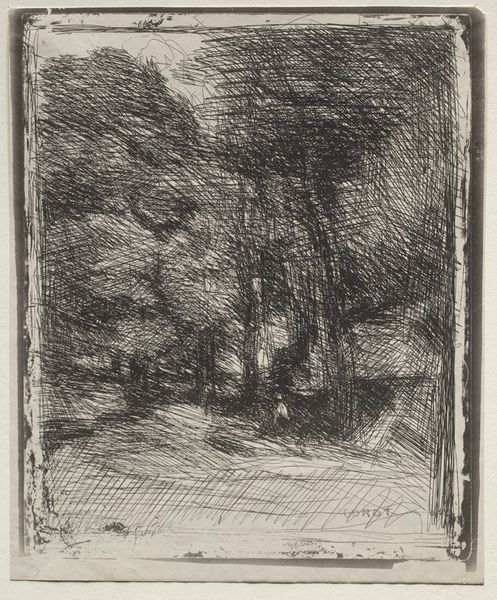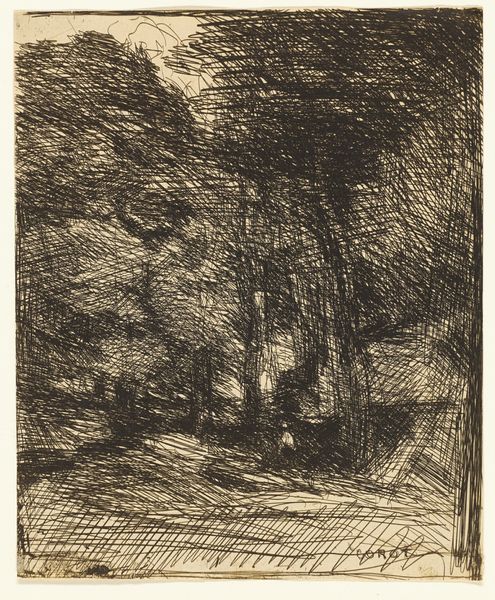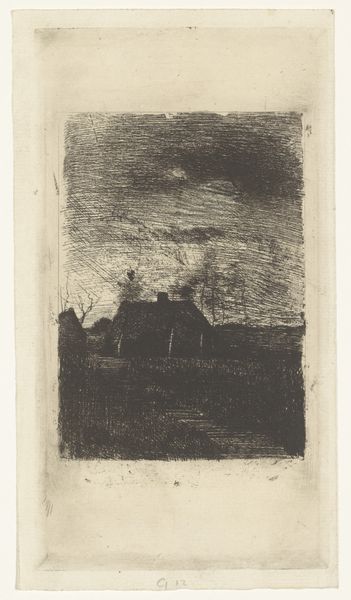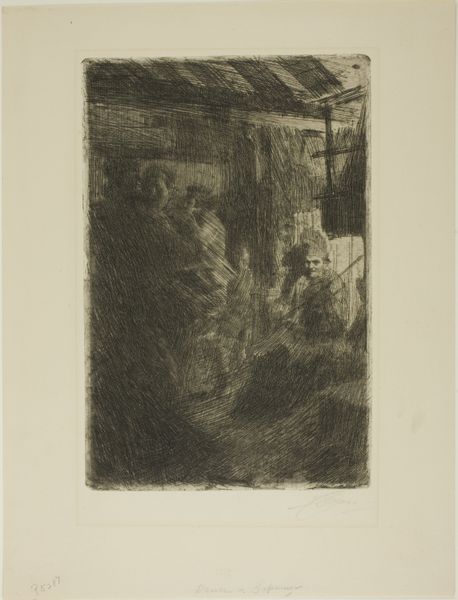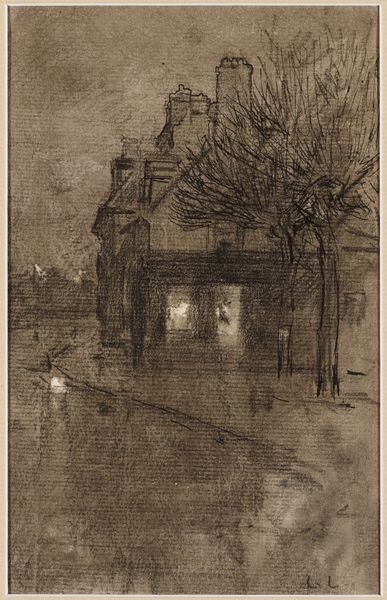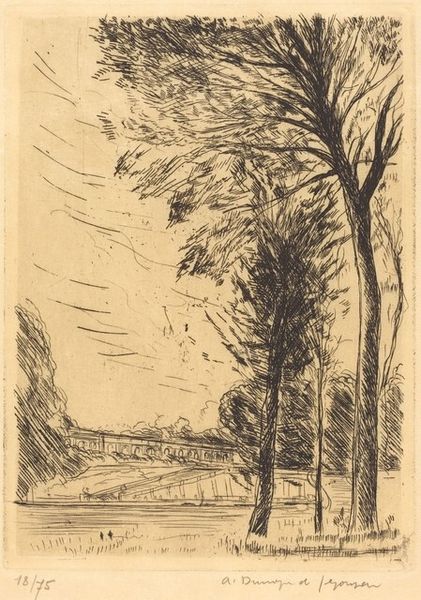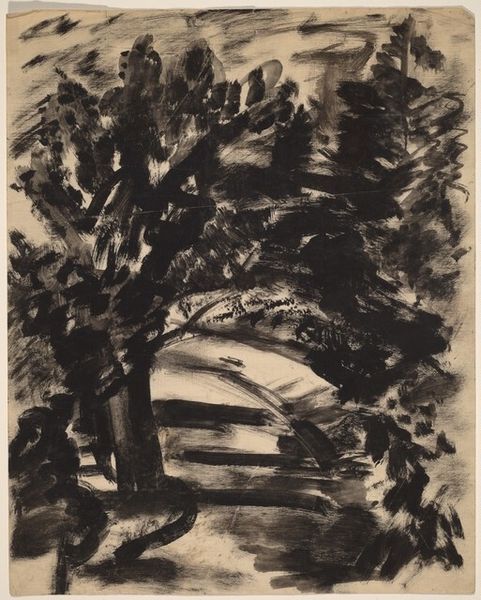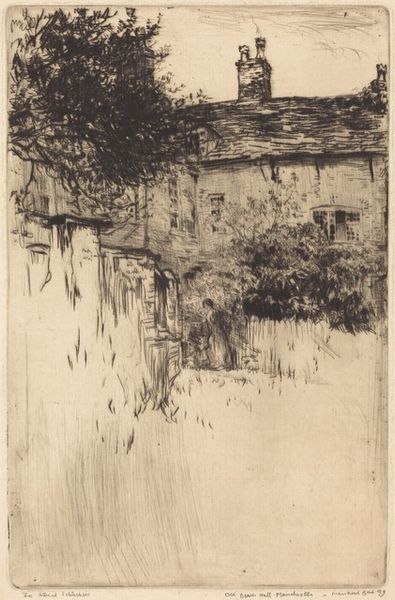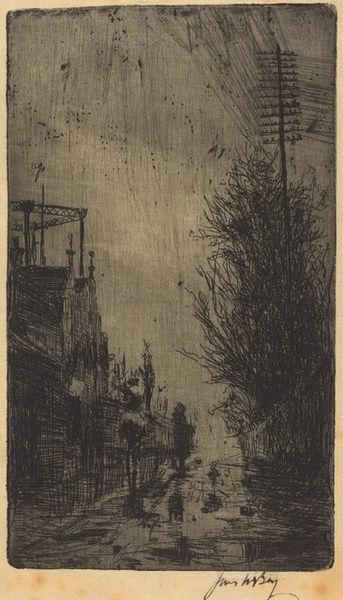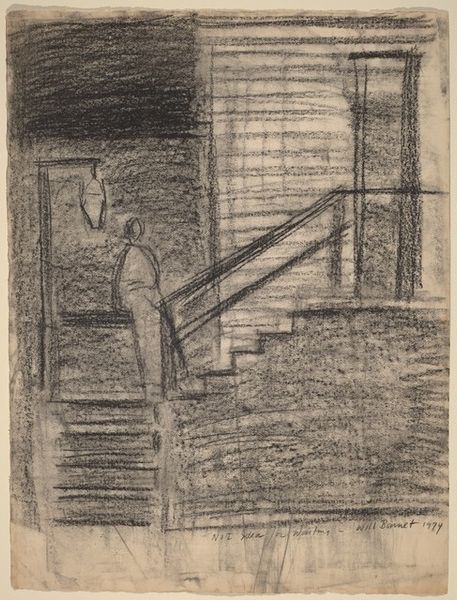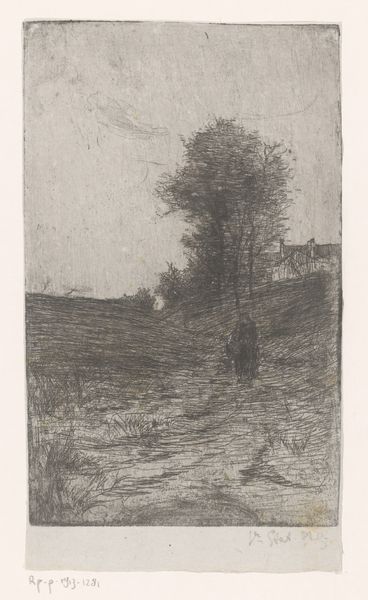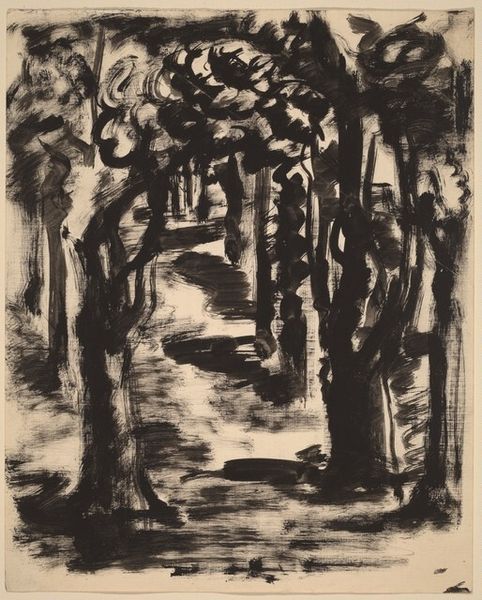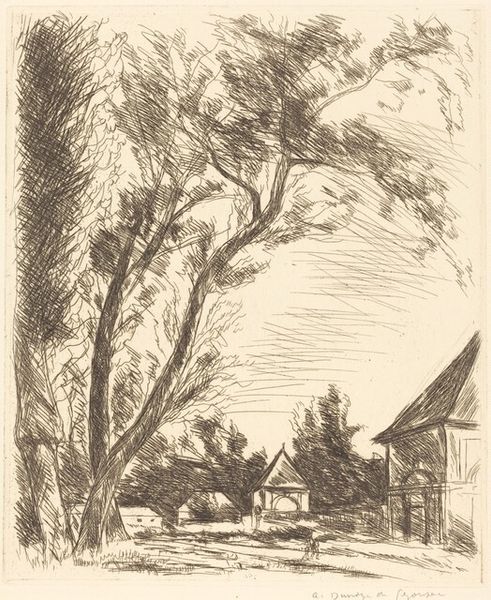
Dimensions: overall: 34.8 x 26 cm (13 11/16 x 10 1/4 in.)
Copyright: National Gallery of Art: CC0 1.0
Curator: This is "New York at Dusk," a drawing by Muirhead Bone, created around 1923. The scene seems simple, yet imbued with such complexity. What strikes you immediately? Editor: That single tree against the cityscape; it's so brooding! The drawing's subdued tones create this incredible melancholic atmosphere. I'm immediately reminded of the Romantic era obsession with nature's sublimity contrasted against civilization. Curator: An apt reading. Notice how Bone uses hatching and layering in his drawing technique to construct the somber mood, but also consider the light sources. The illumination in some windows provides counterpoints in this visual structure that could signal domesticity. Editor: True. That subtle domesticity serves as this powerful human counterpoint against what would otherwise be a picture of nature's sublime dominance over even New York City! Trees are frequent symbols of the life cycle and growth-- it seems here to represent enduring hope and connection, even amidst urban development and the passage of time. Curator: It's also intriguing that Bone renders New York in a style closer to Impressionism. What we consider an early modern metropolis is captured with all the softness and ambiguity more common in depictions of rural landscapes. Editor: Yes, an anachronism. Which underscores, maybe, a universal timelessness. And thinking symbolically, consider that twilight, or dusk, is a powerful threshold. Here it signifies both ending and beginnings in both a visual and a cultural context. We are shown the old world, but also these glimmerings of the new peeking through in those illuminated windows, inviting possibility. Curator: That liminality extends to Bone’s drawing technique itself. Notice the texture—this isn’t strictly linear or photographic, instead suggesting and alluding to forms as opposed to perfectly resolving them. That open-ended quality mirrors what you describe about the twilight state itself. Editor: Precisely! Together, the material quality and evocative symbolism coalesce into something so much more profound than a cityscape. It feels like an introspective invitation to find hope between what is and what could be. Curator: A beautiful synthesis of form and meaning, offering a nuanced perspective of urban existence in the early 20th century.
Comments
No comments
Be the first to comment and join the conversation on the ultimate creative platform.
